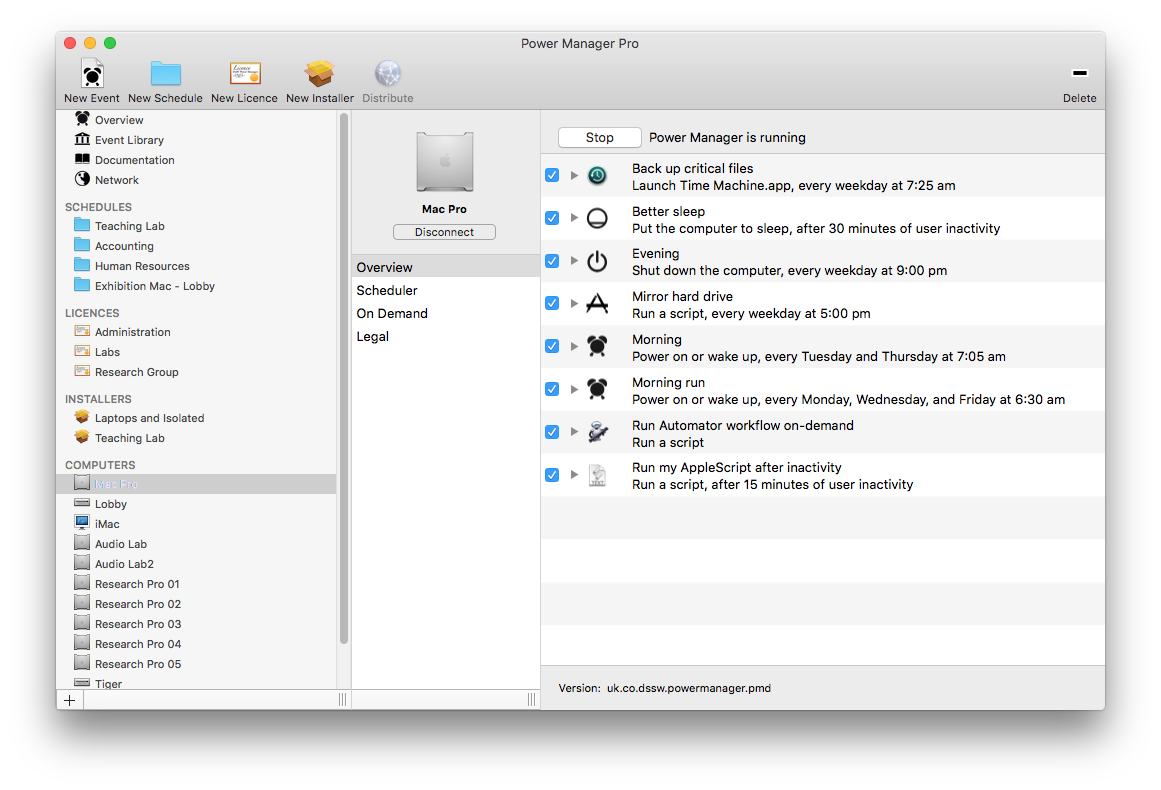-
Power Manager For Mac카테고리 없음 2020. 3. 11. 07:04

The Energy Saver pane of System Preferences offers a number of features for conserving energy; for example, sleep mode and scheduled startups and shutdowns. Mac OS X also gives you the option to automatically log out of an account after a period of inactivity. But for many people, these features are frustratingly limited. Those who need more flexibility should check out Dragon Systems Software Limited's. (Christopher Breen.) Power Manager's System Preferences pane lets you create multiple, customized schedules that determine when your Mac should be awake, asleep, or shut down, along with actions that can occur at specific times.
Each schedule includes an action and a trigger-what causes the action to occur. Actions comprise start up/wake (whichever is appropriate), wake (which affects only a sleeping Mac), sleep, switch to the login window, log out, restart, and shut down. Triggers can be a specific date and time, a daily time, or-for appropriate actions-a chosen period of inactivity. By using multiple schedules, you can customize your Mac's activities to a much finer degree than using Energy Saver settings.
An action option I'd like to see is the capability to run an AppleScript. I also wish the date/time settings provided the familiar calendar and clock controls; instead, you must manually type the date and time. But overall these schedules are easy to use.
Power Manager For Mac
Power Manager also offers an assistant to create schedules based on a computer's use. For example, if you choose School Laboratory as a Mac's primary usage, the assistant asks what days the lab is open, the lab hours, and whether or not you want inactive users to be logged out after a period of inactivity. Power Manager then creates the corresponding energy schedules for you. You can edit these schedules manually, if necessary, as well as disable or enable each individually. Power Manager is much stricter than Energy Saver in terms of what it considers 'activity,' and will force sleep even if there are active processes that would normally prevent it. Similarly, Power Manager will quit apps to log out or shut down, and will log out all users to shut down. This makes Power Manager especially useful in environments-classrooms, labs, a child's computer-where you want to make sure your schedules are followed.
Mac Power Users
If your Mac is asleep when an event such as a logout or shutdown is scheduled, Power Manager will even wake up the Mac to ensure the event occurs. A systemwide Quick Schedule menu lets you schedule one-time events to occur after 10, 30, or 60 minutes-handy for finishing a download or software install, although it would be great if the developer added a 'download finished' type of trigger. You can also use the menu to delay or cancel each upcoming event, cancel all events for a period you choose, or stop schedules altogether until you start them again. The developer provides, and IT folks will appreciate that the utility can be configured for admin-only access, provides AppleScript support and a command-line interface, supports exporting and importing schedules, and includes the capability to deploy schedules to other Macs over a network.
If your Mac is used at home by one person, Power Manager may not offer compelling advantages over Energy Saver. But for multi-user Macs, and especially Macs used in businesses, schools, and other larger organizations, it adds some security and can help save quite a bit of energy-and, thus, money. Want to stay up to date with the latest Gems? Sign up for the Mac Gems newsletter for a weekly e-mail summary of Gems reviews sent directly to your Inbox. This story, 'Power Manager: More Control Over Mac Schedules' was originally published.